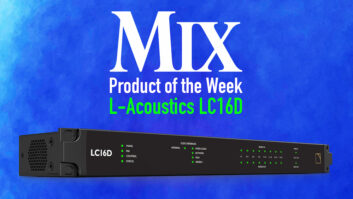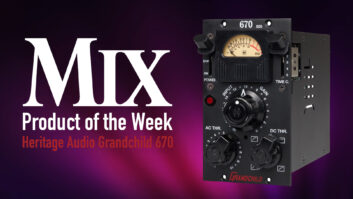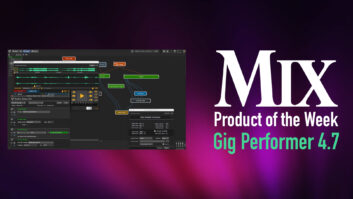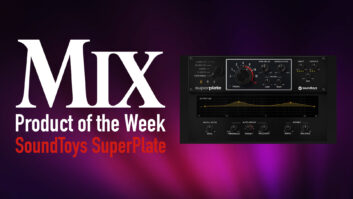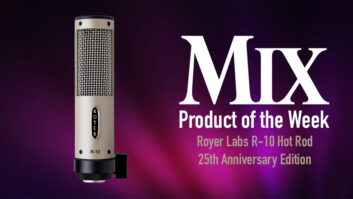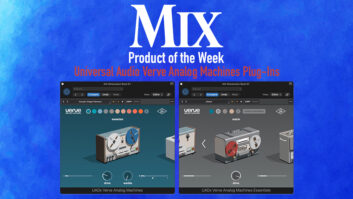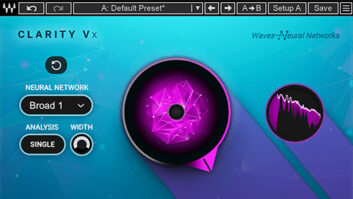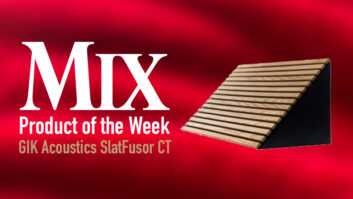You may be wondering, “What the heck is a guitar stompbox doing as Mix’s product of the week?” Well, the Strymon Iridium is an authentic-sounding amp modeling pedal that you can use in your studio for DI guitar tracks. Whether you’re a guitarist who records or someone who records guitarists, this pedal from Strymon, which makes a host of well-respected products, could be super handy to have on hand.
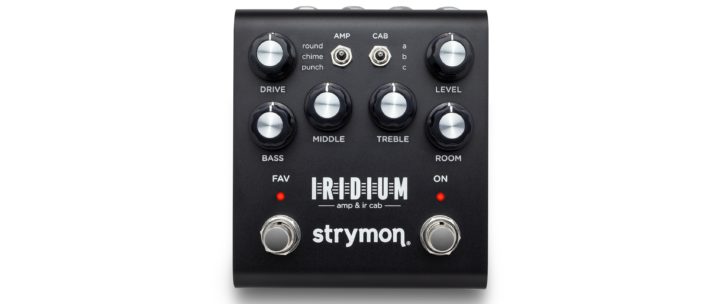 The Iridium, which just started shipping this week, offers realistic amp sounds (to hear the pedal in action, check out this video).The pedal has three onboard amp models: Round is based on the Normal channel of a Fender Deluxe Reverb. Chime emulates the Brilliant channel of a VoxAC30TB. Punch is a model of a Marshall Plexi (Super Lead).
The Iridium, which just started shipping this week, offers realistic amp sounds (to hear the pedal in action, check out this video).The pedal has three onboard amp models: Round is based on the Normal channel of a Fender Deluxe Reverb. Chime emulates the Brilliant channel of a VoxAC30TB. Punch is a model of a Marshall Plexi (Super Lead).
For each amp, you get to choose from three speaker-cabinet impulse responses. The IRs are 24-bit/96kHz files, many of which are stereo. The Round amp’s cabinet models include a 1×12 Fender Deluxe, a 1×12 Fender Blues Junior, and a 2×10 Fender Vibrolux.
Chime’s cab models consist of a 2×12 Vox AC30-6, a 1×12 Custom cab with Celestion Blue AlNiCo magnets and a 4×12 Mesa/Boogie Half-Back.
Punch features IRs from a 4×12 Marshall with Celestion G12M-25s, a 2×12 Custom cabinet with Celestion Vintage 30s and an 8×12 Marshall with Celestion T652s.
What’s more, you can replace the IRs with your own 24-bit/96kHz Wav IRs, using Strymon’s Impulse Manager software, available for both Mac and Windows.
There are several global control knobs on the Iridium. Adjusting the Drive knob makes it possible to get both clean and overdriven sounds from all three models. You can tweak the tone with a 3-band EQ section (Bass, Middle, Treble) that features a similar design to an amp’s tone stack.
The rear-panel I/O includes an input that accepts regular mono guitar cables, but also stereo TRS cables. An Audio Input Selector switch configures the pedals’ left and right output jacks. Choose Mono, when you’ve plugged in a guitar or other mono source; Stereo for stereo input sources; and Sum, when you want your stereo source to be output in mono.
The back panel also features a USB port that’s used for firmware updates and loading IRs and a 9VDC power port for the included adapter.
As someone who does a lot of DI guitar recording, I’m looking forward to checking out the Iridium as soon as I can get my hands on one.
